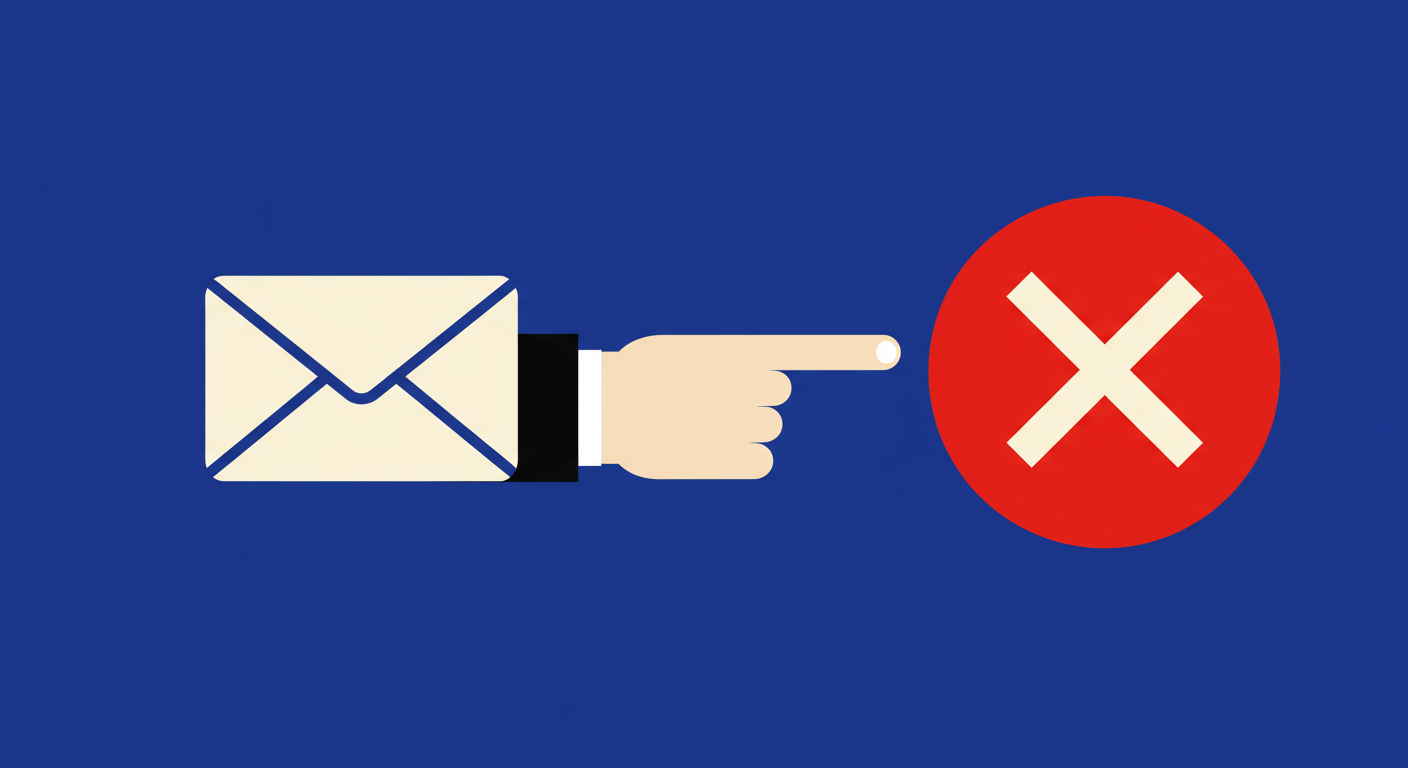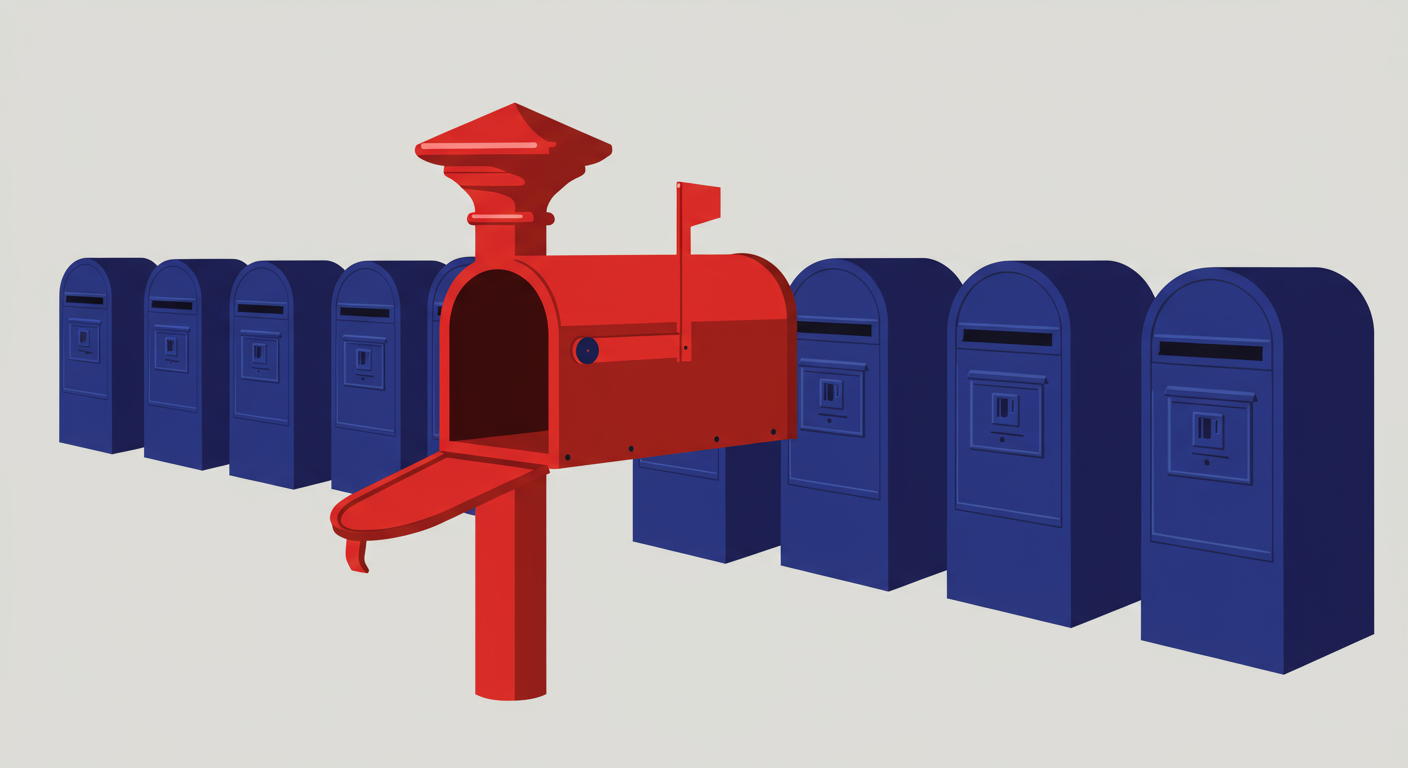Spam traps: what they are and how they work



As someone deep in the world of email, one of the most common issues I see businesses struggle with is deliverability. You can craft the perfect email campaign, but if it doesn't land in the inbox, it's all for nothing. A major, yet often invisible, culprit behind these delivery problems is something called a spam trap. Simply put, a spam trap is a decoy email address used by Internet Service Providers (ISPs) and anti-spam organizations to identify and monitor senders who aren't following email best practices.
These addresses aren't used by real people for communication. Instead, they act as honeypots. Their sole purpose is to receive email, and any message sent to them is immediately flagged as unsolicited or spam, because a real person could never have legitimately signed up with that address. Hitting a spam trap is a clear signal to mailbox providers like Gmail and Microsoft that your list collection or management practices are flawed.
Understanding what they are, how they work, and how to avoid them is not just technical jargon- it's fundamental to maintaining a healthy sender reputation and ensuring your emails actually reach your audience. Ignoring them can lead to your domain or IP address being placed on a blacklist, which can have devastating effects on your email marketing efforts.
It's helpful to know that not all spam traps are the same. They generally fall into a few categories, each indicating a different kind of problem with your email program. The two most significant types you'll encounter are pristine traps and recycled traps, and they carry different weights when it comes to assessing your reputation.
Pristine spam traps, sometimes called honeypots, are email addresses that have never been valid and were created for the sole purpose of catching spammers. These addresses are often placed on public websites, hidden in the code, to be picked up by bots that scrape sites for emails. Since they've never been used by a person, they could never have opted in to receive mail. Hitting a pristine trap is considered a very serious offense because it strongly suggests you are using purchased lists or other illicit means of list acquisition.
Recycled spam traps are a bit different. These are email addresses that were once used by a real person but have since been abandoned. After a period of inactivity, a mailbox provider might deactivate the account and then reactive it as a trap. Sending to a recycled trap indicates a problem with list hygiene. It means you're not regularly cleaning your list to remove old, inactive, and unengaged subscribers.

The primary way senders fall into spam traps is through poor list acquisition methods. This is the root cause of hitting those highly damaging pristine traps. If you buy, rent, or trade email lists, you are almost guaranteed to be sending to spam traps. These lists are often sourced through shady methods like website scraping and are sold to unsuspecting marketers as a shortcut to growth.
The second major reason is a failure to practice good list hygiene. Over time, any email list will accumulate addresses that are no longer active. People change jobs, switch email providers, or simply stop using an old address. If you don't have a process for removing these dormant contacts, you run the risk of them being converted into recycled spam traps. This is why your email list hygiene is so critical.
Ultimately, hitting a spam trap is a symptom of a larger problem. Here are some of the most common risky practices:
The consequences of sending an email to a spam trap can be severe and immediate. The first thing that happens is a direct hit to your sender reputation. Mailbox providers track your sending behavior, and hitting a trap is one of the biggest red flags you can raise. It tells them that you are not a trustworthy sender, and they will begin to treat your future emails with increased scrutiny.
This damage to your reputation often leads to your sending IP address or domain being added to one or more blocklists. A blocklist (also known as a blacklist) is a publicly available, real-time database of sources known for sending spam. ISPs use these lists to filter incoming mail, and if you're on one, your emails will be blocked before they even have a chance to reach the inbox. It's a key part of how spam traps and email blocklists work together.
Ultimately, the final result is a steep decline in your email deliverability. Even if you avoid a blocklist, your mail is far more likely to be filtered directly to the spam folder. This effectively makes your email campaigns invisible to your subscribers, destroying your engagement rates and the return on investment from your email program. Rebuilding a damaged reputation can be a long and difficult process.

Thankfully, avoiding spam traps is entirely within your control and comes down to proactive and responsible email marketing. The single most effective strategy is practicing good email list hygiene. This means regularly cleaning your lists to remove subscribers who haven't opened or clicked an email in a long time- say, 6 to 12 months. This is your best defense against hitting recycled traps.
Next, implement a confirmed or double opt-in process for all new subscribers. This means when someone signs up, you send them a confirmation email with a link they must click to be added to your list. Implementing a double opt-in ensures the email address is valid, owned by a real person, and that they explicitly consent to receive your messages. It's a powerful tool against typos, fake sign-ups, and bots.
Finally, and this is non-negotiable, never buy, rent, or append email lists. The only way to build a high-quality, engaged email list is to grow it organically. Offer real value through your website, content, and products, and make it easy for interested people to sign up. A smaller list of engaged subscribers who want to hear from you is infinitely more valuable than a massive list full of traps and uninterested contacts.
 Spamhaus
Spamhaus 0Spam
0Spam Cisco
Cisco NoSolicitado
NoSolicitado URIBL
URIBL abuse.ro
abuse.ro ALPHANET
ALPHANET Anonmails
Anonmails Ascams
Ascams BLOCKEDSERVERS
BLOCKEDSERVERS Calivent Networks
Calivent Networks EFnet
EFnet
 JustSpam
JustSpam Kempt.net
Kempt.net
 NordSpam
NordSpam RV-SOFT Technology
RV-SOFT Technology
 Scientific Spam
Scientific Spam Spamikaze
Spamikaze SpamRATS
SpamRATS SPFBL
SPFBL Suomispam
Suomispam System 5 Hosting
System 5 Hosting Team Cymru
Team Cymru Validity
Validity www.blocklist.de Fail2Ban-Reporting Service
www.blocklist.de Fail2Ban-Reporting Service ZapBL
ZapBL 2stepback.dk
2stepback.dk Fayntic Services
Fayntic Services ORB UK
ORB UK technoirc.org
technoirc.org TechTheft
TechTheft Spamhaus
Spamhaus 0Spam
0Spam Cisco
Cisco NoSolicitado
NoSolicitado URIBL
URIBL abuse.ro
abuse.ro ALPHANET
ALPHANET Anonmails
Anonmails Ascams
Ascams BLOCKEDSERVERS
BLOCKEDSERVERS Calivent Networks
Calivent Networks EFnet
EFnet
 JustSpam
JustSpam Kempt.net
Kempt.net
 NordSpam
NordSpam RV-SOFT Technology
RV-SOFT Technology
 Scientific Spam
Scientific Spam Spamikaze
Spamikaze SpamRATS
SpamRATS SPFBL
SPFBL Suomispam
Suomispam System 5 Hosting
System 5 Hosting Team Cymru
Team Cymru Validity
Validity www.blocklist.de Fail2Ban-Reporting Service
www.blocklist.de Fail2Ban-Reporting Service ZapBL
ZapBL 2stepback.dk
2stepback.dk Fayntic Services
Fayntic Services ORB UK
ORB UK technoirc.org
technoirc.org TechTheft
TechTheft Spamhaus
Spamhaus 0Spam
0Spam Cisco
Cisco NoSolicitado
NoSolicitado URIBL
URIBL abuse.ro
abuse.ro ALPHANET
ALPHANET Anonmails
Anonmails Ascams
Ascams BLOCKEDSERVERS
BLOCKEDSERVERS Calivent Networks
Calivent Networks EFnet
EFnet
 JustSpam
JustSpam Kempt.net
Kempt.net
 NordSpam
NordSpam RV-SOFT Technology
RV-SOFT Technology
 Scientific Spam
Scientific Spam Spamikaze
Spamikaze SpamRATS
SpamRATS SPFBL
SPFBL Suomispam
Suomispam System 5 Hosting
System 5 Hosting Team Cymru
Team Cymru Validity
Validity www.blocklist.de Fail2Ban-Reporting Service
www.blocklist.de Fail2Ban-Reporting Service ZapBL
ZapBL 2stepback.dk
2stepback.dk Fayntic Services
Fayntic Services ORB UK
ORB UK technoirc.org
technoirc.org TechTheft
TechTheft Spamhaus
Spamhaus 0Spam
0Spam Cisco
Cisco NoSolicitado
NoSolicitado URIBL
URIBL abuse.ro
abuse.ro ALPHANET
ALPHANET Anonmails
Anonmails Ascams
Ascams BLOCKEDSERVERS
BLOCKEDSERVERS Calivent Networks
Calivent Networks EFnet
EFnet
 JustSpam
JustSpam Kempt.net
Kempt.net
 NordSpam
NordSpam RV-SOFT Technology
RV-SOFT Technology
 Scientific Spam
Scientific Spam Spamikaze
Spamikaze SpamRATS
SpamRATS SPFBL
SPFBL Suomispam
Suomispam System 5 Hosting
System 5 Hosting Team Cymru
Team Cymru Validity
Validity www.blocklist.de Fail2Ban-Reporting Service
www.blocklist.de Fail2Ban-Reporting Service ZapBL
ZapBL 2stepback.dk
2stepback.dk Fayntic Services
Fayntic Services ORB UK
ORB UK technoirc.org
technoirc.org TechTheft
TechTheft Spamhaus
Spamhaus 0Spam
0Spam Cisco
Cisco NoSolicitado
NoSolicitado URIBL
URIBL abuse.ro
abuse.ro ALPHANET
ALPHANET Anonmails
Anonmails Ascams
Ascams BLOCKEDSERVERS
BLOCKEDSERVERS Calivent Networks
Calivent Networks EFnet
EFnet
 JustSpam
JustSpam Kempt.net
Kempt.net
 NordSpam
NordSpam RV-SOFT Technology
RV-SOFT Technology
 Scientific Spam
Scientific Spam Spamikaze
Spamikaze SpamRATS
SpamRATS SPFBL
SPFBL Suomispam
Suomispam System 5 Hosting
System 5 Hosting Team Cymru
Team Cymru Validity
Validity www.blocklist.de Fail2Ban-Reporting Service
www.blocklist.de Fail2Ban-Reporting Service ZapBL
ZapBL 2stepback.dk
2stepback.dk Fayntic Services
Fayntic Services ORB UK
ORB UK technoirc.org
technoirc.org TechTheft
TechTheftTo wrap things up, spam traps are an essential mechanism in the email ecosystem designed to protect users and reward senders who follow best practices. They aren't something to be feared by legitimate marketers, but rather an incentive to maintain high standards for list management and consent.
By focusing on permission-based marketing, keeping your lists clean and engaged, and providing genuine value, you will naturally steer clear of these traps. Good deliverability isn't about finding tricks to bypass filters- it's about building a trusting relationship with your audience from the moment they subscribe.












